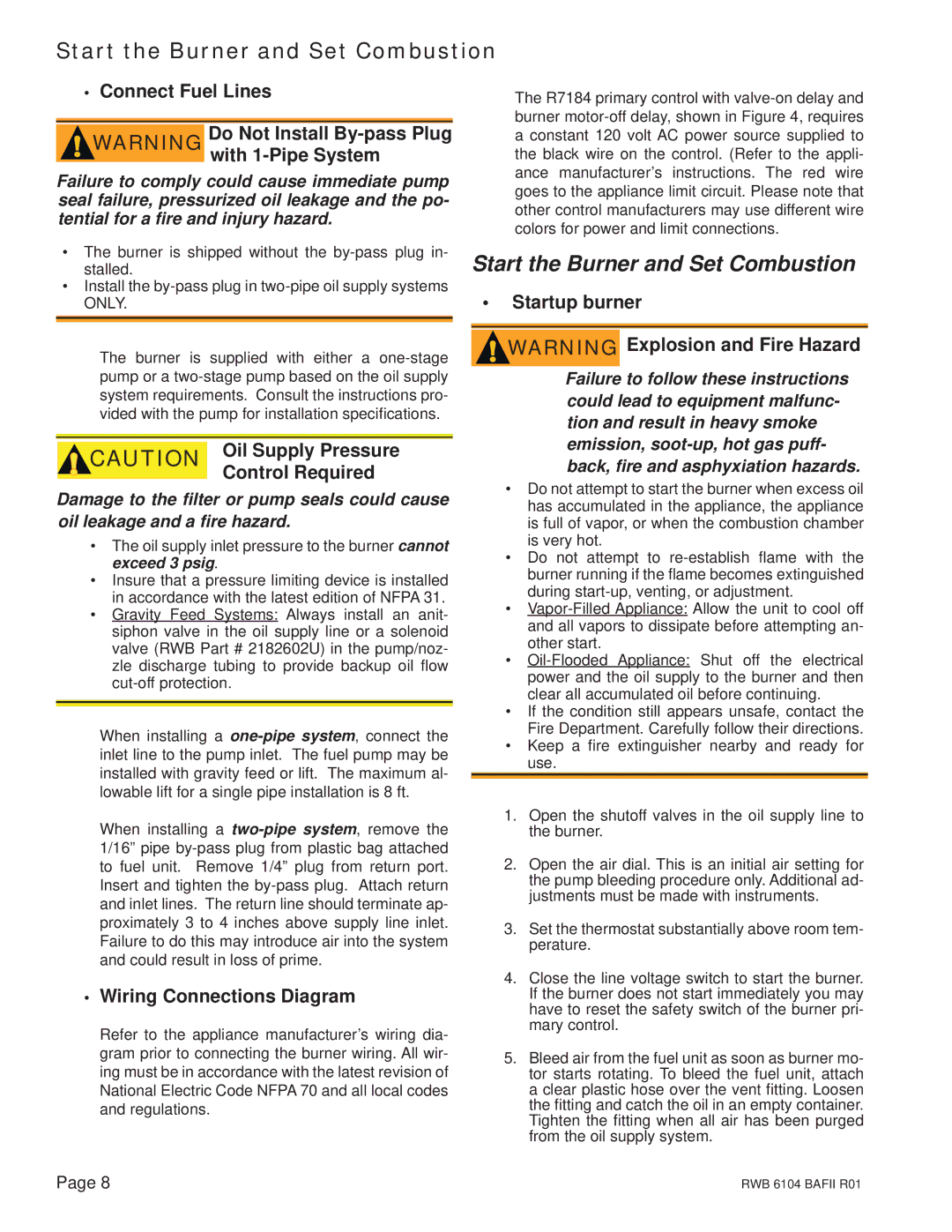FII 85, AFII 100, AFII 150 specifications
The Beckett AFII series, encompassing the AFII 150, AFII 100, and FII 85, represents a significant advancement in the realm of oil burners, particularly designed for residential and commercial heating applications. Around the heart of the AFII series lies a commitment to efficiency, reliability, and ease of installation, setting these models apart from traditional oil burner designs.The AFII 150 model is particularly noteworthy for its impressive output capabilities, making it ideal for larger heating demands. It can produce up to 150,000 BTUs per hour, ensuring that even extensive spaces are heated effectively. The integrative SmartStart technology allows for quick ignition, enhancing energy efficiency and reducing fuel consumption. This model also features a robust construction that extends its lifespan and reduces maintenance needs, while its design minimizes carbon emissions, aligning with modern environmental standards.
The AFII 100 is designed for medium-sized applications, providing up to 100,000 BTUs per hour. Like the AFII 150, it incorporates SmartStart technology to enhance ignition performance and efficiency. Additionally, it boasts an advanced air-fuel ratio control system that optimizes combustion, providing better heating efficiency and environmental performance. Ease of installation is a key characteristic of the AFII 100, with components designed for straightforward integration into existing heating systems.
On the other hand, the FII 85 model serves the low-end heating sector effectively, with an output of up to 85,000 BTUs per hour. Its compact design is perfect for residential applications where space can be a constraint. The FII 85 also integrates Beckett’s patented CleanFire technology, which helps to maintain low emissions and reduce the likelihood of soot build-up. This feature not only prolongs the burner’s life but also enhances the air quality in the indoor environment.
Each model in the AFII series comes equipped with a range of diagnostic features that facilitate ease of use and maintenance, ensuring the systems are running efficiently over their lifespan. The reliability of the Beckett AFII series is further augmented by its adherence to industry standards, guaranteeing safety and performance.
In summary, the Beckett AFII 150, AFII 100, and FII 85 models showcase a thoughtful fusion of technology and engineering aimed at delivering superior heating solutions. Their advanced ignition systems, optimized combustion technologies, and robust designs make them ideal candidates for diverse heating needs, confirming Beckett's commitment to quality and sustainability in the oil burner market.

